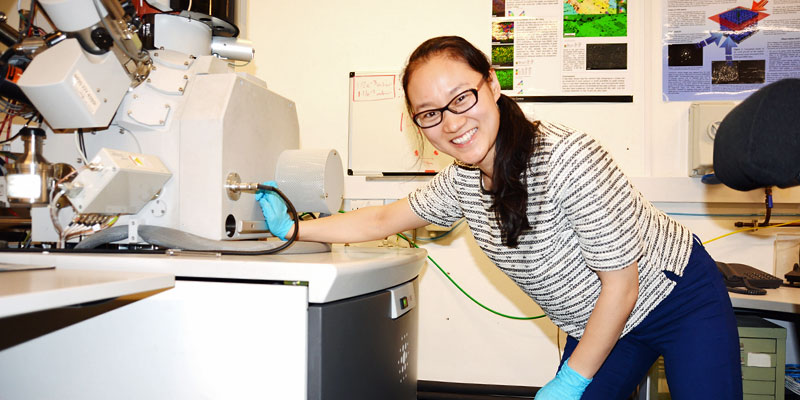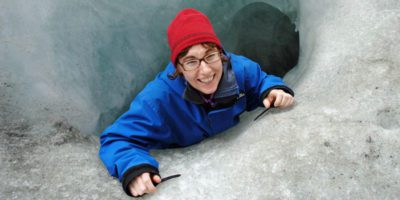Dr. Dong Liu is a research fellow at the University of Oxford’s Department of Materials, and she has expertise in mechanical engineering, materials science and civil engineering. She recently secured more than £311k funding to learn more about nuclear reactor cores and to ensure they remain safe as they reach the end of their time in operation. She studied for her B.Sc. in Beijing before relocating to the UK.
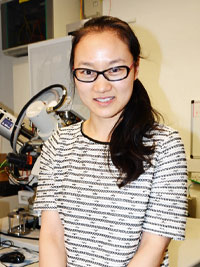
Dong spoke at the Oxford Soapbox Science event on Saturday 18th June 2016. The title of her talk was: “Is nuclear energy green? Is it safe?”
A passion for fixing problems that led me to the boundary between engineering and science
I have always been passionate about engineering, not only because it can fix real problems but also it gives me a chance to understand the underlying mechanisms – this has brought me to this engineering-science boundary.
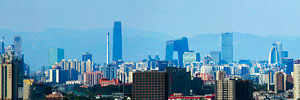
I came to the UK to study a Ph.D. at the University of Bristol ( in the Department of Mechanical Engineering) six years ago after I finished my Bachelor Degree in Civil Engineering in the University of Science and Technology Beijing. I worked on the design and building of bridges and high-rise buildings during that time in Beijing.
At Bristol, my project was to study a thin layer of ceramic coating on the surface of turbine blades to help the cooling of these blades in the engine. It was simply fascinating to look at the different materials extracted from land-based gas turbines and the fancy ones used in jet engines.
My passion was to study how cracks grow in these coatings and their failure modes. Industry experts were involved in the project and it was a great feeling when my research results were found useful for their practical problems. This has made me want to do more in this field, but I am now anxious not to confine myself to one particular area of endeavour. After my Ph.D., I decided to interview for a project on materials related to nuclear power plants and from there I started my first post-doctoral job at Bristol University in the School of Physics.
Getting familiar with nuclear graphite
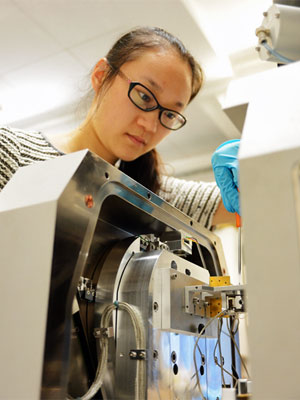
I have learned a lot about this material over the last three years, and have presented my research on many international professional occasions. In particular, I came to the realisation that although these materials work at high temperatures, no one had been able to see in real time how they are damaged and fracture at these temperatures!
With the motivation to see more and understand better these critical materials for nuclear power plants, for the current and future designs, I wrote proposals to EPSRC (the Engineering and Physical Sciences Research Council) to apply for fellowships and also to the Royal Commission for the Exhibition of 1851 [a grant-making educational trust, providing funding for individuals, companies and organisations, particularly in scientific and technological disciplines] for their funding to allow me to solve these problems.
I got their kind support and started my research at Oxford University at the end of last year!
In addition to nuclear graphite, our growing demands for energy mean that many other advanced materials will be needed to work at high temperature. The techniques that I use to look at nuclear graphite can be readily adapted to study these other materials; for example, I am also studying materials called MAX phase ceramics that have combined metal-like and ceramic-like properties at high temperature that can be utilised in coatings for nuclear and fuel cells, etc.
I feel proud to be able to contribute to society to help a much larger group of industry and scientists to better understand these advanced and strategic materials.
Breaking things up and blasting them with super high-power x-rays – all in a day’s work (and more) for me

One of the experiments that I do involves generating a beam of neutrons and others generate very high power x-rays (several orders of magnitude higher than the hospital x-rays). We usually call these places ‘beamlines’ and the time at these labs ‘beamtime’ as we are using those non-stop high energy beams to penetrate through the samples to measure the properties.
Working around the clock to maximise beamtime
These experiments are not like normal lab work – these high energy beams are on 24/7. In order not to waste of any of these precious neutrons, x-rays and beamtime, we work round the clock and try to stay awake with lots of coffee!
For example, I had two of these experiments already in 2016: three-day non-stop beamtime in the Advanced Light Source in Berkeley in the USA, and four-day beamtime in the Rutherford Appleton Laboratory (RAL), just 20 mins drive away from Oxford. We usually have a team of three people to work on a rota basis with very little sleep.
Incidentally, Nature has published a video on scientists working at these types of beamlines called ‘24 hours in a synchrotron’ on 29th March 2016. It nicely describes the ‘beamline’ experiments and the tough time that we all endure during these endeavours.
Novelty with an industrial imperative
Due to the novelty and industrial imperative of my work on these beamlines, I was invited to write an article for ISIS, a world-leading centre for research in the physical and life sciences at the Rutherford Appleton Laboratory, called ‘Neutrons help understand cracks in nuclear reactor moderator materials’.

All these things make me love the academic life. In my opinion, academia is no different from any other occupation – just like everyone else, if you want to stay in a job, make sure that you really enjoy it. As Thomas Edison once said: “I never did a day’s work in my life. It was all fun.” Of course, there are frustrations when experiments don’t work out or when the data analysis becomes too tedious, but these issues are all forgotten when my work is published in the public domain and is found to be of use to industry and relevant to everyday life.
Whether nuclear energy is green and safe – just some of the things I will be discussing
At the event, I will explain how nuclear reactors work and how electricity power is generated and sent to every household from these power plants. In addition, I will talk about some particular examples of the components, such as the fuel assembly, the graphite bricks in the core, the possible designs of the next generation reactors, and the current situation of waste management.
I would hope that my presentation will help the audience to form their own objective answers to the questions: “Is nuclear energy green? Is it safe?”. I will certainly be very happy to answer and discuss any questions that may arise from my talk.
Is that a nuclear reactor I see? Just a model of one of course – but fantastically interesting all the same
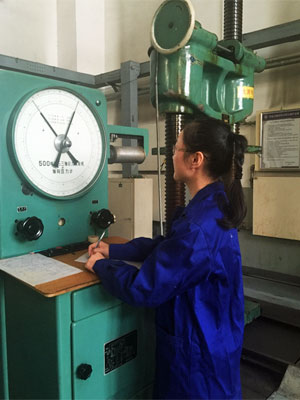
I have to say that I am very lucky in the sense that my department has been very supportive to post this event on our newsletter and the nuclear-related groups have lent me their collections of the nuclear parts for me to demonstrate on the day. In addition to this, my work partners from EDF Energy (the company you mostly see on your electricity bills) have been so excited about this interaction with the public on nuclear energy and my contacts there have been searching around their offices and groups for the most appropriate props to show.
I hope that on the day, I will have a collection of exciting and unique models to share a great time with my audience.
Cultural differences in expectations for women in science and engineering
During my interaction with Chinese universities in science and engineering areas, one comment that I often hear is that it is quite rare to see a girl doing so much research in this area. When I reached my late twenties, people started to ask me: “Why are you still working so hard?” and “Why don’t you have a baby and start a family?” On the other hand, my male colleagues, who are much older, have rarely been asked these ‘family’ questions!
In China, my impression about the female members of the university is that they are usually very ‘quiet’ – they don’t speak as much as their male colleagues at meetings and even if they have a high position in the technical staff, they seem to have little say in any decision-making.
Actually, even though “all generalisations are false”, the majority of female department members that I have seen are not as active as their male colleagues in terms of funding applications, student fostering and so on. Although things are improving in China with policies of increasing the number of females within engineering departments, these female researchers have not seen many benefits as yet, and are essentially “left in the corner”. I’d like to see this change.
No Soapbox Science in China … yet!
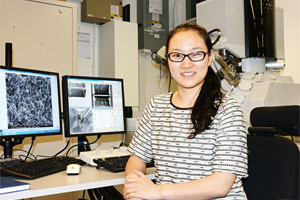
From my own experience, I have received a lot of support from senior academic members as they believe that young person with passion for research deserves a fair opportunity.
International support
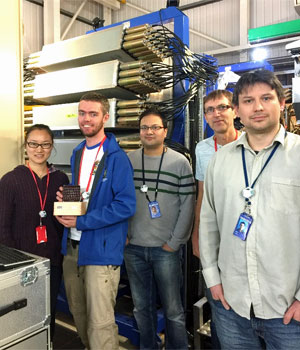
My current project has been supported by members from many organisations such as the University of California, Berkeley, UK National Physical Laboratory, the Culham Centre for Fusion Energy, the University of Bristol and Delft University of Technology in the Netherlands. This has made me feel supported and that I could do great things.
I believe that we are progressing forward in promoting women in science and engineering – steadily and positively, but we have to admit that the number of females in these areas still is small compared with their male colleagues.
This is why events like Soapbox Science are extremely important because they provide the chance for female researchers to demonstrate their excellence to the public. In this way, we can raise the awareness of the younger generation to females in science; and remind the older generation that science and engineering culture is changing that females are very common to be seen in these areas.
It is the excellence of the person that should decide their occupation, not their gender. I also hope that Soapbox Science events can be held worldwide to benefit female scientists / engineers globally.
The science-engineering interface – where it’s all happening
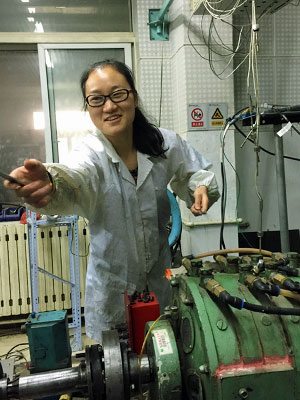
For example, in the loading of an engineering component. The component can crack or break at a load lower than the design load because all the components contain defects. It is these defects determine the component life. To understand the fracture mechanism better, analyses of the fractured surface and the material structure need to be carried out – and this moves one to the (materials) science regime.
My research lies at this engineering-science interface; it is really about using the scientific tools to reveal the ‘secrets’ of engineering problems and feed the knowledge back to enable improved designs in structures or materials for the future.
Using fundamental knowledge to solve real problems
To take a career in science and engineering, I think the best way is to study a related degree (B.Eng, M.Eng, M.Sc. etc.) to start with. During these courses, students would have the chance to get the fundamental knowledge required to solve real problems. In addition, these courses often include small research-oriented projects supervised by academic staff and interactions with industries.
Towards the end of these courses, students will have a flavour of what it is like to work with academia as well as with industry. They can then decide what is the best way forward. Certainly, one can change jobs between academia and industry in due course and this makes the engineering-science area very exciting to work in.
My current mission: Encouraging more young women into this field

I was just awarded a non-stipendiary Junior Research Fellowship (2016-18) by Mansfield College at Oxford University. This gives me access to the College from October 2016 and I will have opportunities to interact and mentor the younger students from diverse disciplines, to encourage more female students to take part in science and engineering, and gather more valuable knowledge about research and life from interaction with senior fellows.
In the meantime, my host at the Materials Department encouraged me to pick up some teaching on the side of my research. So, yes, I am very much looking forward to a colourful life in Oxford.
https://www.researchgate.net/profile/Dong_Liu20
http://gtr.rcuk.ac.uk/projects?ref=EP/N004493/1
http://www.materials.ox.ac.uk/
https://twitter.com/oxfordmaterials
https://twitter.com/uniofoxford
Beijing image credit: By 維基小霸王 (Own work) [CC BY-SA 4.0 (http://creativecommons.org/licenses/by-sa/4.0)], via Wikimedia Commons
Thomas Edison credit: By Louis Bachrach, Bachrach Studios, restored by Michel Vuijlsteke – This image is available from the United States Library of Congress’s Prints and Photographs division under the digital ID cph.3c05139.This tag does not indicate the copyright status of the attached work. A normal copyright tag is still required. See Commons:Licensing for more information.العربية | čeština | Deutsch | English | español | فارسی | suomi | français | magyar | italiano | македонски | മലയാളം | Nederlands | polski | português | русский | slovenčina | slovenščina | Türkçe | українська | 中文 | 中文(简体) | 中文(繁體) | +/−, Public Domain, https://commons.wikimedia.org/w/index.php?curid=6582301

